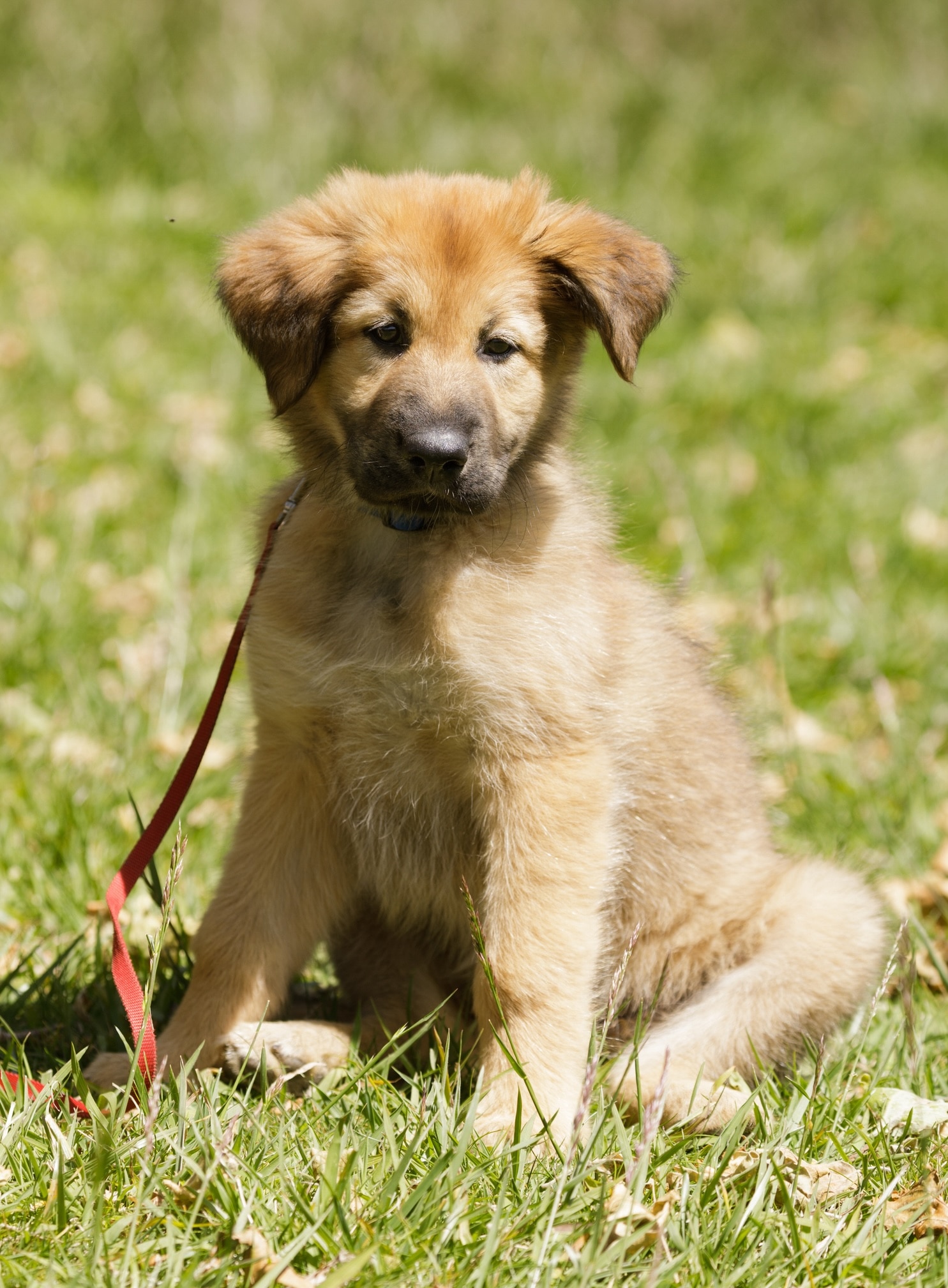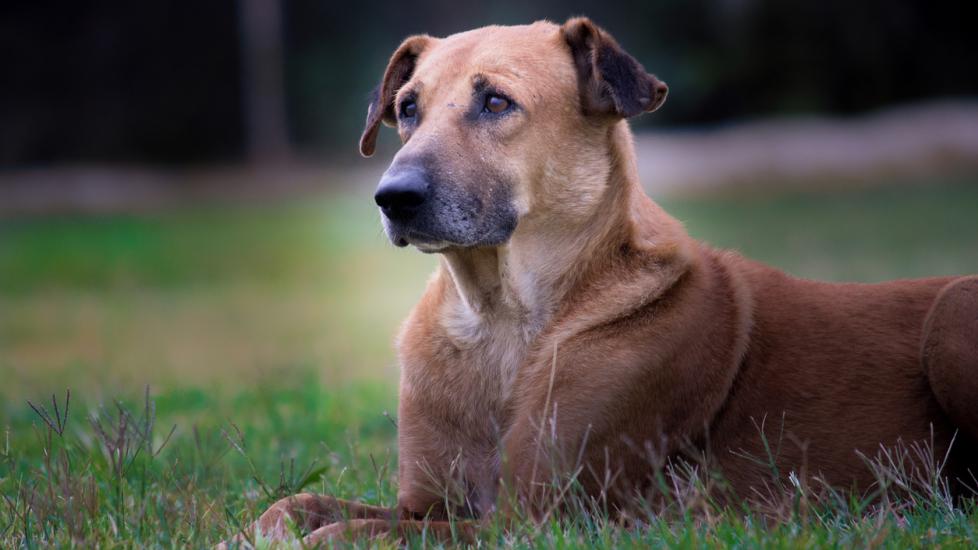Chinook
iStock/Robbie Ross
In the early 1900s, explorer and sled dog-driver Arthur Walden created the Chinook (pronounced Sha-Nook) in New Hampshire by breeding a Siberian Husky with a “Mastiff-type dog,” according to the Chinook Club of America (CCA).
Chinook dogs have a dense double coat that lies close to the body to keep them well insulated, so these dogs do well in cold climates. They are also known for their muscular body, webbed paws, and saber tails—all traits that helped the breed excel as sled dogs.
Chinooks stand 22–26 inches at the shoulder and weigh 50–90 pounds.
Caring for a Chinook

Chinooks are sweet-tempered dogs that are hardworking and devoted to their loved ones. They are extremely athletic and need to be given jobs to do—such as sled-pulling—to burn off energy and keep them mentally stimulated.
They require a moderate amount of grooming due to the shedding of their coat. Weekly brushing works well for most of the year, but in spring and fall when they shed more, this breed requires brushing twice a week.
Chinook Health Issues
Chinooks are typically extremely healthy dogs with an average life expectancy of 12–15 years. However, they are at risk for a few medical conditions.
Hip Dysplasia
Hip dysplasia is a hereditary orthopedic condition that can occur in one or both hip joints, where the hip joint doesn’t align properly as the dog grows. This can cause pain and, over time, arthritis.
Some Chinook puppies are born with congenital hip dysplasia, though this is rare. Most affected dogs develop this condition during their senior years. Symptoms include:
-
Slowness to rise when lying down
-
“Bunny-hopping” gait when running
-
Reluctance to run, jump, or go up or down stairs
-
Holding the affected leg out to the side when sitting up
Typically, the condition can be managed with joint supplements and certain medications. But in serious cases, hip dysplasia surgery may be necessary.
Cryptorchidism
Cryptorchidism in dogs is an inherited medical condition that occurs when one or both testicles do not descend into the scrotum by 8 weeks of age in some males. The retained testicle(s) either remain in the abdomen or can be felt in the groin region.
However, it’s important to wait until a Chinook puppy is at least 6 months old to fully diagnose this condition. The retained testicle may still descend into the scrotum between 8–24 weeks of age. But if both testicles are not palpable in the scrotum by 24 weeks of age, then cryptorchidism is definitively diagnosed.
Undescended testes are at a higher risk of testicular cancer, but cryptorchidism is treatable by neutering your dog when they’re around 1 year old. Chinooks that are cryptorchid should not be bred so the condition isn’t passed down to puppies.
Paroxysmal Dystonia
Chinooks are also at risk for a rare movement disorder called paroxysmal dystonia. This inherited condition causes muscles to tense up and tremor while a Chinook is still conscious.
Tremoring episodes may last up to an hour. Once an episode ends, the affected Chinook appears to be back to normal, but the tremoring episodes continue to occur randomly. There is no treatment for this condition.
What To Feed a Chinook
Chinook puppies should be fed a large-breed, high-quality puppy formula until they are 1 year old. Once they reach maturity, they need to be transitioned to a large-breed, high-quality adult dog food.
Choosing a food that meets the Association of American Feed Control Officials (AAFCO) standards for nutrition is a great starting point for choosing the best dog food for your Chinook, and your veterinarian can help you narrow your options.
How To Feed a Chinook
Chinooks do well with twice-daily feedings, in the morning and evening. If your dog eats quickly, a slow-feeder bowl is recommended to slow down their food intake.
Like all dogs, Chinooks should always be fed a diet that matches their life stage (puppy, adult, or senior), and no more than 10% of their daily diet should consist of treats.
How Much Should You Feed a Chinook?
Chinook puppies have rapid growth spurts, which means it’s important to feed them large-breed puppy food when they are less than 1 year old to provide the extra calories they need to grow. Follow the feeding guidelines on the back of the bag of the puppy formula, which takes into account your dog’s age and expected body weight.
Once a Chinook is 1 year old, transition them to a large-breed adult formula that has fewer calories to prevent unwanted weight gain. Talk with your veterinarian to find out how much to feed your dog based on the health, lifestyle, and age of your Chinook.
Nutritional Tips for Chinooks
A healthy Chinook dog that’s fed an AAFCO-compliant dog food shouldn’t need supplementation. However, there are instances where a veterinarian may recommend supplements for your dog.
For example, if your Chinook has hip dysplasia, your vet may suggest an omega-3 fatty acid supplement and a joint supplement to slow down arthritis in the hip joints. Talk with your veterinarian to find out if your dog would benefit from a supplement.
Behavior and Training Tips for Chinooks
Chinook Personality and Temperament

Every dog is an individual with their own personality, but the typical Chinook temperament is loving, playful, and eager to please their family members, according to the breed club. They have high energy requirements and do best when given a job to do, such as running, hiking, herding, or other dog sporting events.
They can be wonderful family dogs, as they are loving around children they know and thrive when they’re with other dogs when properly introduced.
Chinook Behavior
Chinooks enjoy the company of their family members and other dogs. In fact, the breed can develop separation anxiety if they’re left alone for too long. It may be beneficial to hire a pet sitter to check in on your dog if you’ll be away.
A bored and lonely Chinook dog may turn to destructive tendencies, such as digging their way out of the yard. Attention, exercise, and stimulation are key to keeping this active and alert dog happy.
Chinook Training
Chinooks are smart dogs and generally easy to train. As with all dog breeds, Chinook puppies should participate in socialization and training classes starting as early as 8–12 weeks of age to allow them to mature into well-behaved dogs.
Giving them high-value treats when they are behaving well and following your cues is the best way to train Chinook puppies. This training tactic is called positive reinforcement.
Fun Activities for Chinooks
-
Herding
-
Hiking
-
Obedience training
-
Long walks or runs
-
Pulling sleds or carts
-
Being around children
-
Tracking
-
Agility
Chinook Grooming Guide
The Chinook dog breed has a soft, double coat that sheds throughout the year—but more heavily in the spring and fall. Their coat requires a moderate amount of grooming for upkeep.
Skin Care
The typical Chinook doesn’t require specialized skin care. Regular bathing is recommended when their coat becomes dirty or smelly.
Coat Care
Weekly brushing will keep a Chinook’s medium-length coat free of tangles and debris. But during the heavy shedding seasons (specifically spring and fall), daily brushing is recommended to help remove the undercoat more efficiently.
Eye Care
There are no special eye care requirements for this breed. Contact your vet if you notice changes in your dog’s eyes or vision, such as redness or discharge.
Ear Care
Chinooks can occasionally develop ear infections. Cleaning their ears with a vet-recommended ear cleaner, such as Epi-Otic® Advanced, every three to four weeks for maintenance can help their ears stay healthy.
Considerations for Pet Parents
Chinooks are extremely athletic working dogs that do best living with an active family. They need at least two hours of exercise every day, which can consist of running, walking, hiking, participating in dog sporting events, and playing with their housemates. They are happiest when given a job to do.
They also enjoy the companionship of other dogs, people, and children. For this reason, their perfect home would be with a family on a farm, or in a large home with a fenced yard where they can run and play with other dogs or herd other animals.
Chinook dogs don’t do well in a home where they are the only pet and where their family members are gone for extended periods of time. They’re known to be destructive if left alone and bored.
Their coat needs at least a weekly brushing to minimize shedding and matting, but daily brushing is crucial during spring and fall shedding seasons. Due to their intelligence, training a Chinook can be a breeze if they are given positive reinforcement, and an opportunity to participate in both socialization and puppy training classes.
Chinook FAQs
How rare is a Chinook dog?
Chinooks are an extremely rare dog breed, with fewer than 150 Chinook puppies born each year.
Do Chinook dogs bark a lot?
While all dogs bark, Chinooks are not considered excessive barkers. However, they will bark to alert their family if someone unfamiliar—like a mail carrier—is approaching.
Are Chinooks good family dogs?
Yes, Chinooks can make excellent family dogs because they are playful and social.
